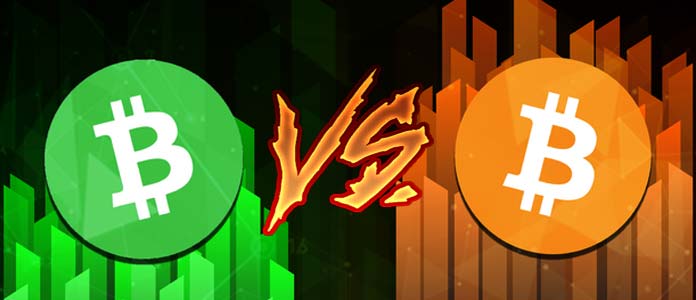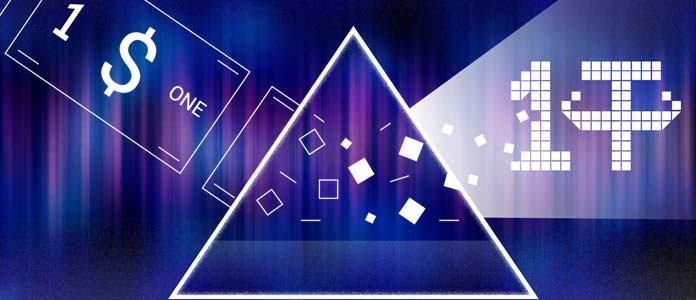Cryptocurrency Knowledgebase – Introduction To Cryptocurrencies
What is Cryptocurrency?
Chapter 1 – Introduction to Cryptocurrencies
In this part of the guide, we’re going to provide a basic overview of what cryptocurrencies are, why they exist, and how they work. We’re going to assume you know virtually nothing about cryptocurrencies and bitcoin.
Here’s a look at what’s included in this chapter:
- What is Cryptocurrency? How cryptocurrency came to be and what the future may hold.
- What is Blockchain? How blockchain technology was created and why it has world-changing potential.
- What is Bitcoin? An overview of bitcoin, the world’s best-known and most popular cryptocurrency.
- How Are Bitcoin Prices Determined? Supply, demand, and the economics behind bitcoin prices.
- What are Altcoins? An overview of alternative cryptocurrencies, or altcoins, and why they’re important.
- What is Ethereum? An explanation of Ethereum, the world’s second largest cryptocurrency.
- Who is Satoshi Nakamoto? Everything we know about Satoshi Nakamoto – the mysterious, anonymous creator of bitcoin.
Whether you’re a total beginner or an intermediate user, you’re about to get a crash course in the world of bitcoin and cryptocurrencies.
What is Cryptocurrency?
A “cryptocurrency” is a combination of two words, including “cryptography” and “currency”. We call them cryptocurrencies because they’re digital tokens that can transfer value – like currency – while also being cryptographically secured.
Let’s break the word down into its two separate components:

Cryptography comes from the Latin word kryptos, which means “to hide”. “Graphy”, meanwhile, comes from the word graphie in French and German, which refers to the process of writing. That means cryptography roughly translates to “the process of writing in a hidden way.”
In ancient and medieval times, “crypts” were hidden beneath the ground to store things of value.
Today, cryptography is an entire field of study. You can read textbooks on cryptography. You can devote your life to researching cryptography. You can get a degree in cryptography.
Modern cryptography is more advanced than it’s ever been at any point in human history. Today, cryptography is the science of writing codes that can be decoded by someone with special access. Modern cryptography originated during World War II, when world powers depended on cryptography to keep radio signals safe. Radio signals could be intercepted by anyone with a receiver, but encrypted radio traffic was meaningless without a decryption key.
Currency

Currency is a monetary token that can be used to store wealth or transfer value. You can hold your wealth in a currency like the US Dollar, for example, or buy a croissant in Paris using the Euro.
As human society developed, the need for a standard exchange unit became increasingly apparent. In ancient times, we relied on the barter system to exchange value. Someone might trade 10 goats for 1 cow, for example. Today, we use currency to complete a similar transfer of value.
For much of human history, our currency had inherent value. Ancient civilizations used gold and silver coins, for example. These gold and silver coins had inherent value: you could melt the coins into gold and silver to capture that value. Over time, countries realized it wasn’t ideal to walk around with thousands of heavy gold coins in your pocket, so they began introducing paper notes. Between 1882 and 1933, for example, the United States used gold certificates as paper currency. These certificates were freely convertible into gold coins. Eventually, the currencies on many major world powers were backed by the value of gold. They were “gold backed” currencies.
In the 1970s, things changed. Under the Bretton Woods agreement, countries decided to abandon the gold standard. Overnight, currencies like the US Dollar and Great Britain Pound became backed by no physical material. At this point, these currencies became “fiat” currencies. Fiat is the Latin word for “by decree”. These currencies had no inherent value. Their value came “by decree” from the government.
The departure from gold-backed currency is one of several factors that played a role in the invention of cryptocurrencies.
The Invention of Cryptocurrencies

During the 1990s and early 2000s, countless companies and individuals were trying to take advantage of the potential power of the amazing new invention called the internet. Long before bitcoin was invented in 2008, others had tried – and failed – to launch a secure, electronic type of money.
There were varying degrees of success. Computer scientist Nick Szabo, for example, created “Bit Gold” in 1998. Today, Bit Gold can be seen as a direct precursor to bitcoin’s architecture – although the project was never launched.
Meanwhile, in 2004, American computer scientist Hal Finney published the first proof of work-style algorithm online.
The first official cryptocurrency, however, appeared online in 2008 when Satoshi Nakamoto published his bitcoin whitepaper. That whitepaper explains the basic functions of bitcoin and how it worked. By January 2009, Satoshi Nakamoto’s bitcoin network had launched. It’s been running ever since.
As of 2018, there are 2000+ cryptocurrencies. Bitcoin continues to be the largest and best-known cryptocurrency – but it’s far from the only one. Bitcoin opened the floodgates to a new world of financial innovation.
The person credited with inventing the World Wide Web, Tim Berners-Lee, is a known public figure who had a proven impact on the world. He created the World Wide Web and look where we are today.
Satoshi Nakamoto may have a similar impact on society – but we may never know his, her, or their identity.
Satoshi published the bitcoin whitepaper online in October 2008. By January 2009, the network had launched, and Satoshi continued to actively develop the project. Satoshi held control over the bitcoin code repository, the Bitcoin.com domain, and other data related to the development of bitcoin. In 2011, however, Satoshi stopped contributing to the project and handed all development materials to another programmer. Satoshi never publicly contributed to the project again.
The mystery of Satoshi Nakamoto is one of the most intriguing parts about bitcoin. We’ll talk more about Satoshi Nakamoto’s identity later in this chapter.
———————————————————————————————————————————————————————-
What is the Blockchain?
Chapter 1.2. About Blockchain Technology
The blockchain is the technological foundation underneath bitcoin. It’s the bedrock that keeps the bitcoin network running and stable.
Bitcoin was the first major implementation of blockchain technology. Today, it’s the basic technology behind virtually every cryptocurrency.
Blockchain is one of the least-understood aspects of bitcoin and cryptocurrencies in general. Someone might explain intricate details about bitcoin – but they could have no idea how the blockchain works.
In essence Blockchain is a ledger that records all bitcoin transactions. Yes, the core of bitcoin’s technology is just a ledger – just like any accounting ledger, that keeps track of transactions and transaction data.
One of the key distinctions between bitcoin’s blockchain and an ordinary ledger is the fact that bitcoin’s blockchain is distributed. Typically, accounting software stores a ledger in one location on a single computer. With bitcoin, the ledger is distributed across millions of computers worldwide. These computers all agree on maintaining a unified copy of the ledger. A change in one copy of the ledger will be replicated across the network.
What’s the point of a distributed ledger if anyone can change the data on that ledger? Well, that’s where the cryptography of the blockchain comes into effect. Cryptography secures the blockchain, preventing any “bad actors” from taking control of the network or issuing bad transactions.
How Cryptography Secures the Blockchain

The core security of blockchain technology comes from its use of cryptography. Specifically, blockchain uses cryptography to ensure all transactions added to the blockchain are legitimate. In order to add a block of transactions to the blockchain, you’ll first need to solve a cryptographic problem, then post a verifiable solution, or a proof, for everyone else on the network to see and verify.
Here’s it broken down in simplified form.
Your teacher asks the entire class to solve a math problem. That math problem is posted on the board in front of the class. The first student to solve that problem will be paid $10.
The entire class tries to solve the problem. One student quickly writes down an answer and runs up to verify that answer with the teacher. The student’s answer is incorrect and the student is rejected. Then, another student walks up with the correct solution. The teacher verifies the solution, adds the solution to the board for everyone to see, and then rewards the student with $10.
This is how bitcoin works at the most basic level. The bitcoin network relies on providing cryptographic proofs. These cryptographic proofs, or solutions, are difficult to solve but easy to verify. They’re complex mathematical problems that take an enormous amount of computing power to solve. When a solution is found, however, that solution can be easily verified. Other computers can plug that solution into the formula to make sure it’s correct. The miner – like the student in the example above – receives a reward for providing the solution.
Once a solution has been posted and verified, all the transactions in the block are verified. At this point, the miner has verified the transactions within the block can take place. The miner has confirmed that all the bitcoin transactions are coming from wallets with an adequate amount of bitcoin to send. The block of transactions can be added to the chain. This creates a “blockchain” or “chain of blocks”, which we’ll talk about next.
Adding Another Block to the Chain

Bitcoin’s network is built on a blockchain. The blockchain is a chain of blocks linking each transaction to a previous transaction. Anyone can view the blockchain at any time. It’s publicly verifiable. You can use a blockchain explorer to check and verify every bitcoin transaction that has ever taken place – from the infamous $100 million pizza order to mysterious $50 million transfers.
Each “block” on the blockchain consists of a group of transactions. Typically, each block contains about 2,020 transactions. Once a node – a miner – has verified the block of transactions and provided cryptographic proof, the block is added to the blockchain.
These blocks form a chain by nature: each block in the bitcoin blockchain contains around 2,000 transactions, but it also contains a message referencing the previous block and another message referencing the next block. In order for a block to join the blockchain, it must reference both the previous block and the next block. This creates a unified chain of blocks – a blockchain.
Why Blockchain Technology is a Big Deal

Blockchain is a revolutionary technology. However, the world didn’t recognize the value of bitcoin’s blockchain until years after the network launched.
Make no mistake: bitcoin’s blockchain is a huge deal. It introduces a revolutionary concept based on a simple idea. Here’s where the value of the blockchain lies:
Using blockchain, two people can securely exchange money without the need for a centralized intermediary.
That may seem like a basic idea. But it’s not. Think about what happens every time you pay for something.
When you tap your credit card at a retail store, the retailer’s payment processor is verifying your card information, then contacting Visa and asking them to deduct the balance from your available credit, and Visa relays that transaction to yet another third party – your bank.
When you spend cash at a store, you’re just giving someone a piece of paper. That piece of paper gets its value entirely from the government. The US government says a piece of paper with a $20 symbol on it has value, so your $20 bill is accepted across the country.
In both of these situations, you’re relying on a centralized party to verify the value of the transaction. That means the money you own isn’t truly your own: you always need someone else in order to spend, access, and store that money.
With bitcoin, things are different. The blockchain replaces the middleman. The blockchain acts as a payment processor. It also acts as the storage system, allowing users to be their own banks by retaining hold of their private keys.
The lack of a centralized authority is what makes bitcoin significant. You can securely transfer value to another individual. That individual can verify that bitcoin payment on their own, then transfer something back to you. You can complete peer-to-peer transactions in a trust-less environment: even if you don’t know anything about the other transacting party, you can complete the transaction in a secure way. You can avoid the hassle, costs, and inefficiency of dealing with a bank.
In short, the value of blockchain comes from the fact that it makes banks unnecessary.
Benefits of Blockchain Technology

The main benefits of blockchain technology include:
Eliminates the Third Party: Blockchain technology removes the need for a centralized, trusted, third party – like a bank or a government body. Transactions can take place between the two people involved in the transaction. There’s no need for someone to get between the two transacting parties – even when those two parties don’t trust one another.
Lower Fees and Less Friction: By eliminating the centralized third party, blockchain technology can lead to lower fees and less friction. You no longer have to pay enormous exchange rate fees when transferring money, for example. There’s no bank to charge a cut of 2% to 4% of every transaction. There’s no need for a greedy, centralized corporation like PayPal. Cryptocurrencies like bitcoin lead to lower fees and less friction between two transacting parties.
Incorruptible and Secure: Today’s entire financial ecosystem is based on traditional bookkeeping. At the most basic level, this bookkeeping system means individual humans are manually entering information into a ledger – like an Excel document. This is prone to fraud, human error, tampering, and other issues. Bitcoin’s blockchain, meanwhile, is incorruptible. It’s impossible to transfer. The entire system is protected with cryptography, making it impossible for a single bad actor to alter the records. The only way to corrupt the bitcoin network is to gather an enormous amount of computing power and overwhelm the network with a 51% attack. This amount of computing power simply doesn’t exist, which is why bitcoin is so secure.
Scalability: Another genius feature of the bitcoin blockchain is its scalability. The network is designed to scale based on the number of nodes, or miners, on the network. As the demand for bitcoin increases, more nodes are incentivized to join the network, creating constant upward scalability. This is where the Bitcoin Cash (BCH) and Bitcoin Core (BTC) debate comes into effect: BCH promotes on-chain scalability based on the original vision of bitcoin, while BTC is turning to a centralized solution called the Lightning Network, which takes transactions off-chain. Both projects have merit, and it remains to be seen which “fork” will reign supreme as the scalability debate continues to range.
The Future of Blockchain

Blockchain is a revolutionary technology. However, it’s full impact on the world has not yet been seen. Some people think blockchain will fizzle away. Others think it will be the precursor to more powerful technologies – like the telegraph was the precursor to the telephone and global communications.
Today, we’re seeing blockchain-like systems that build off blockchain technology. One of the most promising is direct acyclic graph (DAG) technology. Unlike blockchain, DAG doesn’t connect one specific block to the next specific block. Instead, there’s a graph of interconnected blocks joined together in non-linear fashion.
We don’t know what the future of blockchain holds – but from here, things look very exciting.
What is Bitcoin?
Chapter 1.3 Bitcoin
We’ve talked about cryptocurrencies and we’ve talked about blockchain. It’s impossible to talk about both technologies without referencing bitcoin. In this chapter, however, we’re specifically focusing on bitcoin.
Bitcoin’s network was launched in January 2009 by Satoshi Nakamoto. Satoshi is a programmer or a group of programmers who chose to use an anonymous pseudonym.
Bitcoin was the world’s first blockchain-based cryptocurrency. We could argue that previous efforts – like Nick Szabos and his BitGold project – were the world’s first theorized cryptocurrency. BitGold, however, never launched. Bitcoin was the world’s first cryptocurrency to not only launch – but become the world’s largest cryptocurrency.
Today, bitcoin’s market cap is larger than the entire GDPs of certain countries. It hasn’t always been that way, however. Keep reading to discover where bitcoin came from, why it’s a big deal, and what the future may hold for bitcoin.
Bitcoins are digital assets located on the bitcoin blockchain. These digital assets have no inherent value: they’re not connected to gold reserves or any other physical assets. Instead, the entire value of each bitcoin comes from its underlying technology. The blockchain can facilitate transactions between two trustless parties anywhere in the world. You can transfer $0.01 or $10 million without the need for a centralized intermediary. That’s where the value of bitcoin is derived.
How Are Bitcoins Created? Where Do Bitcoins Come From?

There’s a maximum number of 21 million bitcoins in circulation. As of May 2018, we’ve mined just over 17 million bitcoins. As we get closer to the maximum total supply of bitcoin, the mining rewards will gradually decrease.
Miners – also known as nodes – receive rewards for securing the bitcoin network. These miners process transactions on the blockchain, then receive a reward – in the form of bitcoin – when they successfully process a transaction. These bitcoins are locked into the bitcoin network and only released through mining.
In the early days of bitcoin, mining rewards were set at 50 bitcoins apiece. That means the bitcoin network released 50 bitcoins to a miner every 10 minutes. Over time, the mining reward decreased. Today, the reward is set at 12.5 bitcoins. That reward gets cut in half approximately every 4 years.
Ultimately, this means that as we get closer to 21 million bitcoins, it will become progressively harder to mine bitcoins. When bitcoin was first released, the difficulty was rated at 1.0. “Difficulty” refers to how much power it takes to solve a hash encrypted by the SHA256 algorithm. In the last few years, difficulty has risen as high as 4.4 billion. That’s why hobbyist miners struggle to compete with larger mining bitcoin conglomerates. Today, individual miners need to join a mining pool to have any chance of sharing the reward of 12.5 BTC.
The Pros and Cons of Bitcoin

Ultimately, we could write a book about how bitcoin works. Let’s boil it all down into a series of pros and cons.
Pros
Fast Payments and Low Fees: The bitcoin network lets you transfer money easily and cheaply around the world. You can transfer $0.01 as easily as you can transfer $10 million. You don’t need to pay costly exchange rate fees or transaction fees.
Easy to Use: Download a bitcoin wallet to your phone and you can start using bitcoin. You can transfer bitcoin to someone over your phone. You can easily send money overseas, act as your own bank, and perform other advanced functions even with limited technical knowledge.
Secure: Bitcoin is the ultimate secure currency. As long as you remain in control of your private keys, nobody can access your bitcoin holdings. Bitcoins cannot be counterfeited, and all transactions can be immediately verified by checking the blockchain.
Cons
You’re in Charge of Security: One of bitcoin’s biggest advantages is also one of its biggest cons. You act as your own bitcoin bank. You’re in charge of your own bitcoin funds. If something goes wrong – say, if you send bitcoin to an incorrect address or lose access to your private keys – then your bitcoin may be lost forever. There’s no bank helpline you can call when you mess up. Approximately 2 to 4 million bitcoins of the 21 million total supply have been lost through various issues.
Government Regulations: Bitcoin is decentralized and can operate without the jurisdiction of a bank or government. However, you’re a human being who lives within a country. As a citizen of that country, you need to abide by the rules of that country. Governments don’t have control of the bitcoin network but they do have control in other ways. If you earned $1 million through bitcoin, for example, then you’re required to pay taxes when you sell that bitcoin for a profit.
It Facilitates Illegal Activities: Bitcoin can be used for illegal activities, money laundering, and other nefarious acts. Bitcoin has been used to finance terrorism, for example, and to prop up dictatorships like North Korea. Bitcoin has been used to pay for assassinations, child prostitution, and other illegal activities. This is one of the downsides of having a decentralized, pseudonymous currency outside of centralized control.
Bitcoin Versus Bitcoin Cash: The Scaling Debate Continues

Bitcoin launched in 2009. For nearly a decade, the community worked on bitcoin with no major disputes. There were always disagreements between developers in the open source community, but those disagreements would work themselves out, and the entire project steadily grew and moved forward.
Things all changed in 2017, which was the largest year in bitcoin’s history. More people were using bitcoin. More people were buying bitcoin. More people had heard about bitcoin and wanted to get a part of it. This was great for the price of bitcoin, which skyrocketed from $1,000 to $20,000 by the end of 2017. However, it also led to a huge problem: the bitcoin network couldn’t scale with demand.
The problem with bitcoin came down to its blocksize limit. Basically, each bitcoin block was limited to a size of 1MB. This was the original size proposed by Satoshi Nakamoto. With a block size of 1MB, the bitcoin network can process about 2,000 transactions every 10 minutes. Each “block” can hold approximately 2,020 transactions.
A blocksize of 1MB simply wasn’t enough to handle the number of transactions. In mid-2017, bitcoin fees were skyrocketing. Transactions were taking days or even weeks to be completed.
A group of developers proposed a simple change: increase the blocksize limit to 2MB, 4MB, 8MB, or higher. Allow for more transactions to be contained within a single block. Network congestion will clear up.
Unfortunately, that group’s proposed changes were rejected by the bitcoin community. That group of developers announced a hard fork: on August 1, 2017, their version of bitcoin would “fork” away from the main bitcoin blockchain.
The end result was that on August 1, 2017, we had two versions of bitcoin for the first time in history, including bitcoin (BTC) and Bitcoin Cash (BCH). Both versions of bitcoin share the same history. Both versions of bitcoin date all the way back to 2009. Bitcoin Cash is supported by some major, influential figures within the community – including Craig Wright (a man some believe to be Satoshi Nakamoto). Bitcoin, or BTC, continues to have the majority of community support.
The scaling debate rages on within the bitcoin community. It’s unclear what the solution will be.
The Future of Bitcoin
Bitcoin is digital gold. Nobody knows what the future holds for bitcoin. Another cryptocurrency could topple bitcoin in months. There are cryptocurrencies that are faster and more secure than bitcoin. There are cryptocurrencies with better scaling than bitcoin or cheaper fees. Nobody, however, can claim the title of the world’s first cryptocurrency like bitcoin – and that’s one of many reasons why bitcoin is valuable.
How Bitcoin Prices Work
Chapter 1.4 Bitcoin Prices
“Bitcoin isn’t backed by anything. It has no value.”
When you ask people about the value of bitcoin, they may say things like that.
There’s some truth to that statement – but it’s also really ignorant to say bitcoin is “backed by nothing”.
Bitcoin has no inherent value because it’s not tied to a certain physical object like gold. You can’t exchange your bitcoin for gold, for example, and there’s no connection between bitcoin and any physical asset.
However, bitcoin has plenty of real value from its underlying technology. The entire value of bitcoin is based on its technology. That technology allows bitcoin to be used as a revolutionary store of value and an efficient currency. The value of bitcoin is based on its usability. Usability is linked to supply and demand.
As bitcoin’s usability rises, the demand for bitcoin increases. The supply of bitcoin, however, never changes and will never change. There’s a total supply of 21 million bitcoins. No more than 21 million bitcoins can ever be created.
As of May 2018, approximately 17 million bitcoins have been mined, leaving 4 million available to be mined. Of the 17 million bitcoins in circulation, it’s believed that approximately 2 to 4 million bitcoins have been lost – the owners have lost their private keys, for example, which means the bitcoins are still available on the bitcoin blockchain, but they cannot be accessed.
All of this information leads to a simple conclusion:
As the usability of bitcoin increases, demand for bitcoin grows. Supply, however, has remained the same over time. Increasing demand and a stable supply leads to higher prices.
That’s how the price of bitcoin is determined. It also explains why the price of bitcoin has steadily risen year-after-year.
In comparison, look at currencies like the USD. Governments don’t want a fiat currency that fluctuates in value between $1 and $100. That would be disastrous for the economy. That’s why governments print money. They increase the supply of money in response to demand. The goal is to keep the value of the currency stable within a certain range. Over time, this typically leads to inflation: the total supply of USDs is constantly rising, which means the value of the $10 USD you hold today will not have the same value 10 years from now – despite the fact that your $10 USD is always going to be worth $10 USD.
There Are Two Factors Behind the Price of Bitcoin

This all boils down to the fact that there are two factors behind the price of bitcoin, including:
Utility and Usability: As bitcoin becomes more usable, the demand for bitcoin increases. In the early days, bitcoin was a nifty online currency, but it wasn’t very usable. There weren’t good wallet apps, for example, and no major merchants accepted bitcoin. Today, things have changed, and bitcoin is more usable than ever before.
Scarcity: The other MAJOR factor behind the price of bitcoin is its scarcity. As the price of bitcoin rises, the supply of bitcoin never changes. There’s always a total supply of 21 million bitcoins. A few bitcoins are constantly released through the mining process as we approach the 21 million bitcoin limit. However, the increasing supply of these bitcoins does not keep up with demand, which is why we’ve seen the price constantly rise over time.
Other Factors Affecting the Price of Bitcoin

The two major factors affecting the price of bitcoin are supply and demand. Supply is influenced by the scarcity of bitcoin and its 21 million unit limit. Demand is influenced by the usability and utility of bitcoin.
However, there are other factors that affect the price of bitcoin, including things like all of the following that can affect demand:
Market Sentiment: Market sentiment is another way of saying ‘demand’. Market sentiment refers to how major exchanges, communities, investors, institutions, and markets see bitcoin. How does the community feel about bitcoin? Has recent bitcoin news been priced into the market? Are markets bullish (believing the price will rise) or bearish (believing the price will fall)?
Regulatory Changes: Crypto prices plummeted in September 2017 when China announced the closure and ban of bitcoin exchanges. Some people called it the end of bitcoin. The price of bitcoin, however, quickly recovered and rose to an all time high a few months later. Regulatory changes around the world can have a major effect on bitcoin. If the United States, South Korea, or other major bitcoin-using nations ever announce a widespread ban to bitcoin, for example, the markets will be flooded with people looking to sell their bitcoins. History tells us the price of bitcoin always rebounds after regulatory changes, but you never know what the future holds.
Exchange-related Issues: Other major bitcoin price movements have occurred due to exchange-related issues. The infamous Mt. Gox hack, for example, caused the price of bitcoin to plummet from $1400 to $200. The world’s biggest bitcoin exchange was hacked and hundreds of millions of dollars of bitcoin were lost. Some people saw it as the end of bitcoin – it was simply too insecure to be a real currency. These hacks and other exchange-related issues can substantially influence the price.
Is Bitcoin a Bubble?

You’ll find plenty of people calling bitcoin a bubble. Any time demand for any asset rises suddenly over time, you’ll find people calling it a bubble. There are real estate bubbles, for example. There are also historically famous bubbles like “Tulip mania” in the 1700s and the Dot Com bubble of the 1990s.
Is bitcoin a bubble? Is it doomed to collapse like bubbles of the past?
It could be. Like with all aspects of bitcoin, it’s impossible to predict the future.
However, it’s important to remember that bitcoin isn’t like any traditional asset in the world today. It could buck the trend. Bitcoin’s bubble might never burst. Or, bitcoin might not even be in a bubble.
A bubble is only a problem when a large group of people suddenly decide to sell that particular asset. This is when the bubble bursts. Sometimes, the bubble never bursts. Sometimes, the market cools and a small group of people decide to sell. The bubble deflates slightly but never bursts.
Would a large group of people ever suddenly sell bitcoin? Would the market ever be flooded with people who are trying to sell their bitcoin but can’t find a buyer? It’s certainly conceivable. We’ve seen similar events occur in the past when certain countries ban bitcoin or when certain exchanges get hacked.
Remember: a fast rise in price doesn’t necessarily constitute a bubble. Instead, artificial over-valuation of an asset causes a bubble.
Bitcoin’s rise could be legitimately fueled by people who understand and believe in the future of the currency. Or, bitcoin’s rise could be fueled by people who bought bitcoin because they expected to get rich quick.
To date, bitcoin has recovered from every major hurdle it has faced. Numerous people have announced the death of bitcoin and the bursting of the bubble – but so far, the price has steadily grown over time.
Maybe the drop from $20,000 to $10,000 between December 2017 and January 2018 was the “bubble bursting”. Maybe the price will drop to $100 within a few months when the United States announces harsh bitcoin regulations. We just don’t know – and that’s what makes bitcoin exciting.
What is Ethereum?
Chapter 1.5 Ethereum
Ethereum is the world’s second largest cryptocurrency by market cap, behind only bitcoin. Launched in 2015, Ethereum has grown to become one of the best-known names in the crypto space.
Like bitcoin, Ethereum is an open source platform built on blockchain technology. However, Ethereum has many unique features that separate itself from bitcoin and other cryptocurrencies.
The primary goal of bitcoin is to function as an international payment platform. Bitcoin was launched as a currency built on blockchain technology. Ethereum, meanwhile, is an open source platform for developers. Developers can build currencies on the platform. Or, they can build games like “Crypto Kitties”. It’s an open source platform where anyone can build, launch, and securely run decentralized apps on a blockchain.
The Story Behind Ethereum

The Basics: What Makes Ethereum Different?
Ethereum is an open source, public, blockchain-based distributed computing platform and operating system. Today, Ethereum clients are available for all major operating systems. Developers can freely build decentralized apps – also known as dApps – on the platform.
Why would developers build on Ethereum? Well, Ethereum has unique features like the Ethereum Virtual Machine (EVM) that can execute scripts using an international network of public nodes. This Turing-complete virtual machine allows users to harness the power of blockchain to perform complex, decentralized functions. It’s like having a software-running server distributed around the world. These scripts are known as smart contracts.
The Ethereum network runs on a currency called Ether (ETH). Gas, meanwhile, is used as an internal transaction and pricing mechanism, helping to mitigate spam and allocate resources on the network.
Ultimately, all of these innovations have led many people to call Ethereum “blockchain 2.0”. It’s the second major leap in blockchain technology in history – at least, according to Ethereum supporters. Other people call Litecoin “blockchain 2.0” – so the title is still up for debate.
Ethereum: A Brief History
Ethereum was proposed in 2013 by Vitalik Buterin, who was just 19 years old at the time. Described as a wunderkind, the Russian-born computer programmer grew up in Canada and published a whitepaper for Ethereum late in 2013. He received the Thiel Fellowship in 2014, getting $100,000 from Peter Thiel in exchange for a promise to avoid university and focus on Ethereum full-time.
The Ethereum network launched in July 2015, although an initial crowdsale took place between July and August 2014. Money raised from the crowdsale was used to fund development of the project.
The DAO and The Creation of Two Versions of Ethereum
In 2016, Ethereum faced a major event: the infamous collapse of The DAO project. “DAO” was an acronym for “Decentralized Autonomous Organization.” The goal was to create a decentralized app on Ethereum called The DAO. That application would organize a community of investors together to make various democratic investment decisions. The community would vote on various proposals, allocating an enormous pool of money to promising projects and then sharing in the profits when the projects came to fruition.
That all sounds good – and The DAO crowdsale proceeded smoothly. The sale attracted huge amounts of attention and money. By May 2016, the project had set a record for the largest crowdfunding campaign in history, raising over $100 million by May 15, 2016. By the end of the crowdsale, the fund held a total of $150 million in ETH from 11,000 investors worldwide. In fact, at one point, the fund held nearly 14% of all ETH tokens in circulation.
That’s when things suddenly changed. Near the end of the crowdsale, a paper was published online showcasing an umber of vulnerabilities in The DAO. The security vulnerabilities were particularly prominent in the smart contracts used to hold raised funds.
In June 2016, The DAO was subject to an attack that exploited a number of vulnerabilities. A single hacker gained control of $50 million worth of ETH – approximately one third of the money raised by the project. The user wasn’t able to sell the tokens: they were just about to capture the tokens and lock them way from the fund.
At this point, the Ethereum community had a choice to make. They could move forward, accept the loss, and sacrifice the lost tokens. Or, they could “roll back” the blockchain and move to a point before the hack took place.
One side of the community – the majority – chose to roll back the blockchain to a point before The DAO was hacked; this led to the creation of Ethereum, or ETH
The other side of the community – the minority – chose to accept the loss and sacrifice the lost tokens, leading to the creation of Ethereum Classic (ETC)
Today, Ethereum (ETH) remains the core arm of the project, while Ethereum Classic – although still in active development – is in the minority. They’re two separate blockchains. However, when people talk about Ethereum, they’re generally talking about Ethereum (ETH) and not Ethereum Classic (ETC).
The Benefits of Developing Apps on Ethereum

Ethereum is an open-source development platform where anyone can create and launch their own blockchain-based, decentralized apps.
Why would a developer build an app on Ethereum?
The main advantage is the way in which the app stores data. With traditional apps, app data is stored on a centralized server. That means your data, your personal details, and anything you make with the app is sent to a third party server. If you create, say, a photo or piece of artwork using the app, then that data is stored on a server owned by the app developer.
With Ethereum, data is stored differently. User data remains with the user. Even if the app crashes, you remain in control of your data as long as you hold your private key. Only you can make changes to your data, and nobody – not even the person who created the app – can change ownership of your digital asset.
Ethereum apps also store app data on the blockchain. That means the data is publicly-viewable. Anyone can check the Ethereum blockchain to verify the app data – including the rules and programming for the app. You don’t need to trust the app’s creator.
What is Ether (ETH)?

Ether, or ETH, is the main unit for the Ethereum blockchain. Listed under the symbol ETH, Ether is mined in a similar way to bitcoins. Both blockchains use the proof of work (PoW) algorithm, which means miners devote processing power to the network to secure transactions, then receive a reward in the form of ETH.
Just like other cryptocurrencies, you can store Ether in a wallet. There are popular Ether wallets like MyEtherWallet available as a browser extension.
Unlike bitcoin, Ether does more than just work as a cryptocurrency: it also helps to power the system. Ether is the “fuel” of the Ethereum network because it helps run all decentralized apps on the network.
Of course, Ether can also be traded, bought, and sold like any currency. The price of Ethereum, like the price of bitcoin, rose dramatically in 2017, climbing from $13 to over $1400 at one point in January 2018.
You need Ether to do anything on the Ethereum platform. Ether also relies on Gas, including Gas Limits and Gas Price. To calculate the final price of everything you do on the Ethereum platform, you need to take into account Gas Limits and Gas Price based on the following formula:
Final Price (in ETH) = Gas Limit x Gas Price
The best way to think of Gas is as the cost of performing an action on the Ethereum network. Gas Limit, meanwhile, is the maximum amount of “fuel” required to run an operation or execute a smart contract. Gas Price is the cost per unit quantity for gas. The price of gas can be controlled by the user. The higher you set your Gas Price, the sooner your transaction will take place.
When you complete an Ethereum transaction, you’ll be asked to input the Gas Price. You can customize your Gas Price or accept the average price.
Another unique thing about Ether is that, unlike bitcoin, there’s no fixed quantity of Ethereum. There’s a total supply of just 21 million bitcoins, but there’s no fixed supply of Ethereum. On average, 18 million ETH are mined every year.
How Do Smart Contracts Work?

Ethereum is well-known for its smart contracts. Smart contracts are now available across a number of blockchain-based platforms, although Ethereum was the first to introduce smart contracts.
The easiest way to understand smart contracts is this: they’re computer programs running on the blockchain.
These computer programs can be coded with different rules. Anyone can verify and view these rules by checking the blockchain.
The smart contract can be outfitted with rules stating that the contract will automatically execute a certain action when certain conditions are met. A smart contract for car insurance, for example, might pay drivers $20,000 when their car is totaled.
Smart contracts can be seen like standard contracts. In the legal world, a contract is a secured agreement between two parties. There are employment contracts that force employers to pay employees for certain work, for example. These contracts are based on a set of rules enforced by law.
Like an ordinary contract, a smart contract has ruled enforced not by law, but by cryptography.
Anyone can build their own smart contract on the Ethereum network. Today, people use Ethereum smart contracts to launch ICOs, secure real estate transactions, or make business deals.
Smart contracts can use things like “oracles” to verify a certain event has taken place. A sports betting website might use an “NFL scores oracle”, for example, to verify the score of a certain game. Two parties who bet on the score of that game will rely on that oracle to verify the score; then, the smart contract will automatically dispense payment based on the score of that game.
The Future of Ethereum

Ethereum has one of the most active development communities in the cryptocurrency ecosystem. Ethereum’s core developers actively contribute to the ecosystem. However, the ecosystem has also attracted thousands of independent developers creating decentralized apps (dApps) on the platform. This creates a vibrant marketplace and an active ecosystem of users seeking to push the platform forward.
The future of Ethereum looks bright. Today, it sits as the #2 largest cryptocurrency by market cap – a position that has remained mostly steady since 2016 (aside from brief challenges from Bitcoin Cash and other top cryptocurrencies). It’s not unreasonable to think Ethereum could reach #1 status at some point in the future.
What are Altcoins?
1.6 Chapter – Altcoins
An altcoin, or alternative coin, is a general term for any digital currency that isn’t bitcoin. Ethereum, Litecoin, and Stellar Lumens are all altcoins.
Bitcoin has remained the world’s largest and most popular cryptocurrency since its launch in 2009. It’s always held a dominant market position – although bitcoin’s market dominance has gradually dwindled over the years. As of May 2018, bitcoin has a market dominance of around 40%. That means 40% of the market cap in the entire cryptocurrency industry is in bitcoin, while 60% is in altcoins.
Today, there are 2,000+ altcoins. Anything can be an altcoin. A digital currency that launched through a recent ICO is an altcoin. A major currency like Dogecoin is an altcoin.
Altcoins originally had a bad reputation. Many people saw altcoins like Dogecoin as a joke (which, admittedly, DOGE was). They saw altcoins as a way to capitalize on the success of bitcoin. Some people launched altcoins as a get rich quick scheme. Other altcoins – like Bitconnect and Hextra – were blatant Ponzi schemes or multi-level marketing-style scams.
Fortunately, most people no longer view altcoins as inherently bad or scammy. Today, there are plenty of altcoins with superior features to bitcoin – like faster transaction times, better security, and a more active development community. New altcoins are emerging on a near-daily basis. There’s no reason to think that a certain altcoin couldn’t be “the next bitcoin”.
What is an ICO?

Many altcoins launch through an initial coin offering, or an ICO. The name stems from an initial public offer, or IPO, which is a term used in the traditional finance industry. When a company wants to “go public” and offer their stock for sale to the public, they launch an ICO. Similarly, when a cryptocurrency developer wants to launch their coin to the public, they launch an ICO.
Why Are ICOs Controversial?

ICOs are controversial. 2017 was the year of the ICO: hundreds of companies decided to launch initial coin offerings. Some companies did so for benevolent reasons. They wanted to change the world with their product – they just needed money to get their product off the ground.
Other companies, however, launched ICOs for nefarious reasons. They wanted to capitalize on the hype of ICOs. Many of these companies were surprisingly successful, raising millions of dollars with little more than a 5 or 10-page whitepaper. Sometimes, these companies disappeared and pulled an immediate exit scam. In other cases, these companies still claim their product is in development – although it seems unlikely the product will ever be released.
There was another major controversy with ICOs. In many cases, the “coins” sold in ICOs weren’t just digital tokens. Instead, the tokens conferred real value to users. Some coins paid users dividends based on company profits, for example. Other coins gave users voting rights or a permanent share of the company. That may sound good – but there’s a big issue: it constitutes the sale of a “security”, and it’s illegal to sell a security if you haven’t registered with an organization like the Securities and Exchange Commission (SEC). By the end of 2017, many ICOs were blocking American IPs from participating.
Today, ICOs come in all different levels of quality. It’s up to you to make reasonable judgements before investing in a particular ICO.
How to Stay Smart When Buying Altcoins

Altcoins are a high risk, high reward type of investment. Some altcoins have enormous future potential and will skyrocket dramatically in price in weeks. Others will plummet in price soon after launch. How do you separate good altcoins from bad altcoins? Here are some things to keep in mind when analyzing various coin projects:
Check the Website and Whitepaper

The project’s whitepaper and website will display crucial information about the project. You’ll want to check the website and read the complete whitepaper before giving any of your money to a project during the ICO. If the website and whitepaper are filled with spelling mistakes or look unprofessional, then close the window and pick another altcoin. Seriously. An ICO project that doesn’t take the time to craft a good whitepaper or website probably isn’t worth your time.
Look for an MVP, Alpha, or Beta

Some ICOs will launch with just an idea. These ideas might have a great whitepaper. That whitepaper might explain how the team is preparing to develop a technology that will completely change the world. That all sounds good – but the idea has limited value until the technology is actually developed. Look for a minimum viable product (MVP), an alpha, or a beta version of the platform. If the company has a working version of their technology in place, then that’s a huge advantage over projects that are just at the idea stage. Investing in a project with no MVP available to the public is extremely risky.
The Team

Team information is one of the hardest parts of an ICO to analyze. Many ICOs inflate team qualifications. Furthermore, many teams are based around the world, and a PhD in one country might mean significantly less than a PhD in another country. However, transparent team information is an absolute must-have before investing in a company. Many ICO scams use fabricated team information – like stolen photos and identities – to make their project seem legitimate. Spend a few minutes researching the team to make sure they’re real people with strong backgrounds capable of seeing the project to completion.
The Market for the Product

What problems is the project trying to solve? How does the company plan to succeed? What market does the company hope to attract? Is there a legitimate market need for the project? Or is the company just piling onto an overcrowded industry? We’ve seen many currencies launch with fast transaction times and cheap fees, for example, but these currencies stand little chance of competing with bitcoin, Ethereum, and other options with better name recognition.
Conclusion
Ultimately, ICOs are risky endeavors. Investing in altcoins through ICOs can help you earn a lot of money – but you’re more likely going to lose most of it.
The altcoin industry has changed enormously over the years. Altcoins originally had a reputation for poor-quality, poor business models, and poorly thought-out strategies. Today, altcoins are launched by legitimate businesses seeking to add real value to various industries.
Who is Satoshi Nakamoto?
1.7 Chapter – Satoshi Nakamoto
Out of all the interesting factors related to bitcoin, the mystery of Satoshi Nakamoto might be the most intriguing storyline.
Satoshi Nakamoto changed the world when the bitcoin whitepaper was published online in 2008. Satoshi singlehandedly created the cryptocurrency industry. 50 years from now, we could look back on Satoshi as the person who started the financial revolution and led to the demise of the global banking industry.
Today, however, we have no idea who – or what – Satoshi Nakamoto is. It’s one of the internet’s best-kept secrets.
When the bitcoin whitepaper first appeared online, many people assumed Satoshi Nakamoto was the person “he” claimed to be: a Japanese computer programmer born on April 5, 1975.
However, it quickly became apparent that Satoshi Nakamoto wasn’t who Satoshi claimed to be. The first clue was how Satoshi typed online and the words he used while doing so. In bitcoin’s documentation and in various forum posts, Satoshi didn’t type like a middle-aged Japanese man. Instead, Satoshi used words like “bloody difficult” and other English idioms. He used English slang and typed in casual English using acronyms like “BTW”.
The other clue was the times at which Satoshi would appear and post online. Over the years, Satoshi developed a habit of only posting at certain times of day. These terms were typically in the middle of the night in Japan, but they were normal business hours on, say, the west coast of the United States.
Another final clue was Satoshi’s birthdate. April 5, 1975 might seem like an insignificant date. However, it’s one of the most important dates in the history of money.
On April 5, 1933, US President Franklin Delano Roosevelt signed two executive orders that would change the financial future of the country. One executive order, EO 6101, established the Civilian Conservation Corps, and the other executive order, EO 6102, made it illegal for US citizens to hoard gold coin, gold bullion, and gold certificates. Overnight, it became illegal for US citizens to hold gold: Americans were forced to own US Dollars. Anyone who held gold or silver faced a penalty of $10,000 or up to 5 to 10 years of imprisonment. The official reason for the executive order was that the Great Depression had led to “hoarding” of physical assets like gold. This hoarding made the recession worse.
Some have called April 5 “the most important day in money”. That’s because on April 5, many stopped viewing money as an independent unit under their own control. People started realizing the powerful effect that the government could have on money management.
Satoshi listed his birth year as 1975, which is also a significant year in the history of money. 1975 is the year Executive Order 6102 was reversed and gold possession was re-legalized for ordinary US citizens. For 40+ years, owning gold – the oldest store of value in the world – was illegal in the United States because the government said it was illegal.
For all of these reasons – the birthday, the login times, and the English idioms – people started to believe Satoshi Nakamoto might not be a quiet Japanese programmer in his 30s.
Some people started to believe Satoshi Nakamoto was a single computer programmer based in the United States or Australia. Others started to believe Satoshi Nakamoto was a group of people. Some people even insist Satoshi Nakamoto is a government-based institution – like the US Federal Reserve.
So who is Satoshi? Let’s find out.
Satoshi Nakamoto Net Worth

Why does Satoshi’s identity matter? Aside from obvious reasons like curiosity, Satoshi Nakamoto is the most anonymous billionaire in the world today.
Depending on the fluctuating price of bitcoin, Satoshi Nakamoto is worth anywhere from $5 billion to $10 billion on an average day. Satoshi retains control of approximately one million bitcoins on the bitcoin blockchain.
Satoshi’s private keys have become legendary. Everyone can see Satoshi’s bitcoins on the blockchain. Those bitcoins, however, have never moved.
Satoshi’s net worth also provides good incentive to never reveal his identity: anyone worth that much money would instantly become a target. Whether Satoshi is an individual or group, it’s easy to see the incentive to stay anonymous.
Who is the Real Satoshi Nakamoto? Possible Answers and Identities
Nick Szabo

We mentioned Nick Szabo’s name earlier in this chapter. Nick is a reclusive American computer programmer best-known for creating the world’s first idea for a cryptocurrency. Szabo created BitGold in 1998. The project laid the foundation for a cryptographically-secured online currency. However, the currency was never launched. Szabo, to his credit, has continuously and vehemently denied any connection to Satoshi Nakamoto and has no public connection to the bitcoin project, although he remains involved in the crypto industry to this day.
Craig Steven Wright

Dr. Craig S. Wright is the only individual on this list to actually claim to be Satoshi Nakamoto. Everyone else has publicly denied any connection to Satoshi. Dr. Wright chose a different path. In December of 2015, a number of media outlets identified Dr. Wright as the creator of bitcoin. Dr. Wright refused any press statements, which of course led to increased speculation.
Soon after, Dr. Wright’s house was raised by Australian tax authorities, sending speculation into a feverish pitch. In May 2016, Dr. Wright finally admitted the truth in a blog post: he was Satoshi Nakamoto.
Hackers attacked Dr. Wright’s emails, uncovering an email that revealed Satoshi Nakamoto to be a joint pseudonym used by Dr. Wright and David Kleiman, a computer forensic science specialist who has since passed away. Dr. Wright and Kleiman were business partners (in late 2017, meanwhile, it was announced that Kleiman’s family was suing Dr. Wright for bitcoins the pair supposedly mined during the early days of bitcoin).
How did Dr. Wright prove he was Satoshi? Well, he couldn’t. Dr. Wright posted proof online, but that proof was quickly debunked by members of the Bitcoin Core development team. They claimed anyone could have made that proof, and there was nothing within that proof to show that Craig was definitely Satoshi.
The raid by Australian tax authorities, meanwhile, also had nothing to do with bitcoin. The Australian government claimed they were investigating Dr. Wright’s general business dealings for reasons outside of crypto.
Ultimately, Dr. Wright would later withdraw his claim of being Satoshi Nakamoto. The entire chapter remains a bizarre blip in the history of bitcoin. Some continue to believe that Dr. Wright is Satoshi. There’s no doubt he was there during the earliest days of bitcoin’s launch (he was one of the first to mine a large amount of bitcoin), but it’s unclear how he was connected to the project – if at all.
Hal Finney

Hal Finney is an American computer scientist who passed away in 2014 at the age of 58. Finney is best-known for being the first person in the world to receive a bitcoin. He was the recipient of the first bitcoin transaction, which was sent from Satoshi Nakamoto to Finney in January 2009.
Finney has another claim to fame: in 2004, Finney created the first reusable proof of work system, years before bitcoin’s whitepaper was published online.
Finney has explained his side of the story in a forum post here. He claims to have met Wei Dai and Nick Szabo, both of whom were heavily involved with early cryptocurrency efforts prior to the launch of bitcoin. Finney also admits he was “probably” the second person after Satoshi to run the bitcoin software. He mined block 70-something of the bitcoin blockchain. At one point, he received an email from Satoshi asking to send 10 coins as a “test” of the network. In January 2009, Finney became the first person in history to receive bitcoins in a transaction. He later admitted that he forgot to pay Satoshi back.
Finney also kept an ongoing email thread with Satoshi where he detailed software bugs. “I thought I was dealing with a young man of Japanese ancestry who was very smart and sincere,” explains Finney in one of his final forum posts.
Finney was diagnosed with ALS in 2009. By 2013, according to a forum post written online, Finney was essentially paralyzed, but he continued to code, contributing to the bitcoin ecosystem by developing projects like bcflick, a security protocol for bitcoin wallets.
Hal publicly denied being Satoshi Nakamoto and denied any connection to bitcoin’s development.
Here’s where things get weird: eventually, the media discovered that Finney was the world’s first bitcoin recipient. They traveled to his house to interview him. They started talking to his neighbors to see what they knew about Finney, the alleged billionaire living next door.
That’s when the media met someone living next door to Hal Finney named Satoshi Nakamoto.
Dorian Satoshi Nakamoto

There’s a real man named Satoshi Nakamoto living in the world today (in fact, there are several in Japan). One man lives so close to Hal Finney that it’s either the most extraordinary stroke of luck on the planet or it’s not a coincidence.
Dorian Nakamoto lived 2 blocks away from Hal Finney. He was born as Satoshi Nakamoto. Today, you’ll see him called “Dorian Satoshi Nakamoto” online or “Dorian Nakamoto”.
Dorian Nakamoto does not appear to have been connected to the development of bitcoin. He has vehemently denied any involvement with the project.
Nevertheless, the fact that a man with such a unique name lives right next door to the guy who first developed a proof of work algorithm and received the first cryptocurrency transaction seems like an extraordinary coincidence.
Right when Dorian Nakamoto hype was reaching its climax, something dramatic happened. For the first time since 2009, Satoshi Nakamoto’s forum profile came online to write a single post. That post simply said, “I am not Dorian Nakamoto.” Posted on March 6, 2014, the post was Satoshi’s first since February 18, 2009.
Funnily enough, Dorian Nakamoto periodically appears at bitcoin events to this day. He’s a celebrity within the space. He insists the entire situation is a mysterious coincidence.
Elon Musk, the US Government, the Illuminati, and Other Mysterious Identities

The four figures listed above all have the best claims to being Satoshi Nakamoto. However, some people have offered other theories online.
Some people have pointed to Elon Musk as being the real Satoshi Nakamoto, for example. Others have pointed to a Finnish sociologist or an Irish cryptography student as being Satoshi.
Dave Kleiman, the late business partner of Craig Wright, is also frequently mentioned as a possible Satoshi. The same can be said for Gavin Andresen, the developer to whom Satoshi transferred control of bitcoin’s code after Satoshi stopped publicly contributing to the project.
The theories get more outlandish from there.
Some people claim the US Government launched bitcoin, for example, to combat the failing US Dollar. The US government – under the guidance of Obama or whatever other figure conspiracy theorists choose – launched bitcoin to ensure the US retained power over the economic future of the world. Or something like that.
Others claim the US Federal Reserve privately launched bitcoin for the same reasons. Some people claim it was China. Others claim it was the Rothschilds, the Illuminati, or similar groups.
Conclusion

Ultimately, the identity of Satoshi Nakamoto is one of the greatest mysteries in the history of the internet, the history of currency, and the history of software development. We might never know the identity of Satoshi Nakamoto.
Or, Satoshi could step from the shadows and publicly reveal himself tomorrow. Like most other aspects of bitcoin, it’s a complete mystery what the future holds.










